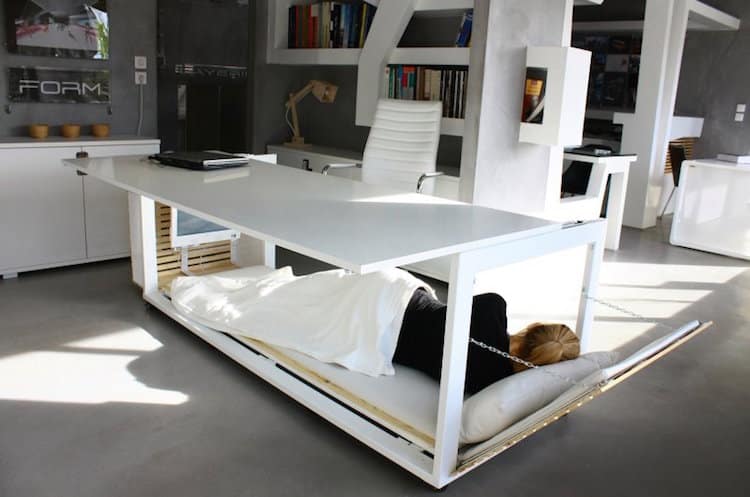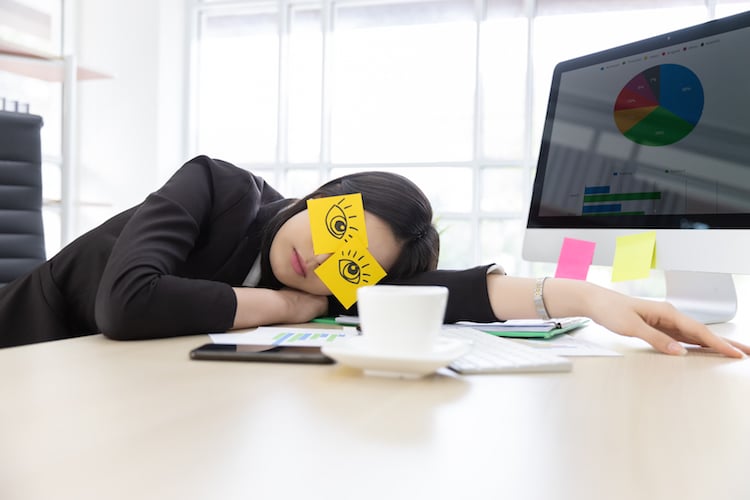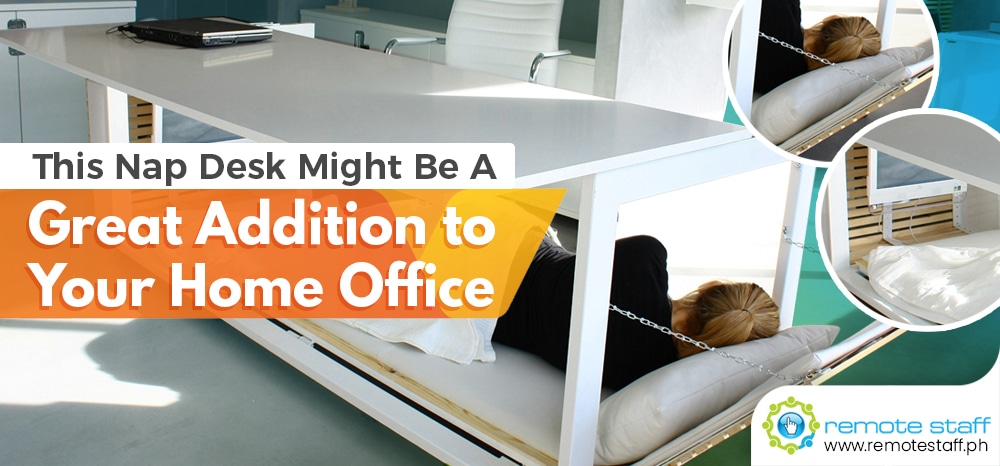Okay, let’s take a break from the COVID-19 news feed for a bit. (But keep your masks on, alright?)
By now, loads of people have, whether by choice or by necessity, embraced the remote working lifestyle. Many of us probably work from home on a regular basis, and that has probably required significant adjustments in more ways than one. While it can be amazing, working from home isn’t without its downsides and risks.
Because believe it or not, a remote working set-up can make you more vulnerable to overworking yourself. The blurred lines between your professional and personal life can make it harder to establish and stick to boundaries. Thus, many remote workers find it hard to eat at the right time or to get enough sleep.
The latter, it seems, inspired Greek designer Nancy Leivaditou to come up with something that’s quite literally the stuff of dreams: a nap desk.
A Nap What?

Image Credit: time.com
If you’ve ever felt like you practically live at work, Leivaditou’s nap desk ought to lessen the sting somewhat. Called the “1.6 S.M. of Life” desk (1.6 sq. meters of life, get it?), it looks like a perfectly ordinary desk at first. With a few adjustments, however, the lacquered wood, metal, and white leather contraption transforms into a bed.
All you need to do is slide the top backwards and then fold the back, which functions as the mattress, down. Voilà! You’ve got yourself an instant bed underneath your desk. Pillows and blankets are optional, but highly recommended.
Not quite in the mood for a nap, but still want to lie down for a rest? There’s a built-in TV on end of the desk, in case you want to catch a quick episode of your favorite Netflix show between tasks.
The Benefits of Napping on the Job

Falling asleep on the job is often taboo, but done right, it can also make you more productive. A quick 20-minute nap, for instance, can clear your head and boost your concentration. Naps are also a great way to deal with the dreaded afternoon slump, and have even been known to reverse a deteriorating performance.
Of course, the quality of your nap also matters. To get the maximum benefits, it’s best to take a nap anytime between 2 to 4 PM, as this is usually when your energy dips. Dimming the lights and using noise-cancelling earphones and a sleep mask helps a lot, as does keeping naptime within a 20-minute limit. Anything beyond that can make you too groggy, apparently.
Unfortunately, the nap desk is still in the prototyping stage at this point. Still, if you’re pretty handy with a hammer and a saw (or know a trusty carpenter who could probably use the commission at this point), you can come up with your own version.
Lastly, do take note that while naps are absolutely amazing, they are still no substitute for getting at least 7 hours of sleep most nights. If you continue to feel tired or agitated after a power nap, it might be time to overhaul your sleeping habits.

